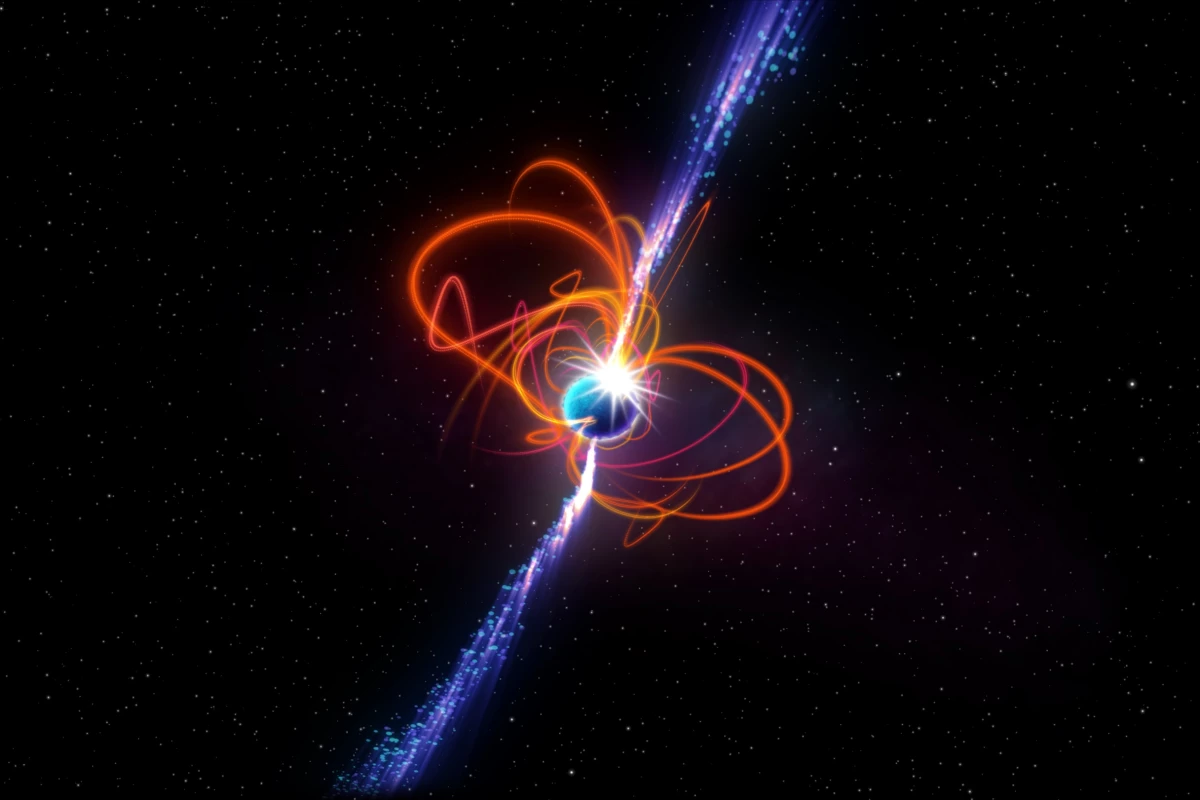Astronomers have detected a radio signal in our galaxy that blares for several minutes at a time, every 21 minutes, and has been doing so for at least 35 years. This bizarre signal doesn’t fit the bill for any known object without some major revisions to current physics.
The signal was originally detected by the Murchison Widefield Array (MWA), a radio telescope stretched across the Western Australian outback. It was designated GPM J1839-10, and was traced to the Scutum constellation about 15,000 light-years from Earth.
The repeating radio pulses were detected between July and September 2022 in MWA data, before being confirmed by a variety of other telescopes around the world. The bursts last anywhere from 30 seconds to five minutes, and fire up every 21 minutes like clockwork. That makes it the longest repeating radio source ever discovered in the cosmos.
The leading candidate, the team says, is an ultra-long period magnetar. These dense objects are types of neutron stars that have particularly powerful magnetic fields, which can emit periodic radio signals as they spin.
The problem is, most of these spin so fast that their radio bursts last mere milliseconds or up to a second or two, and repeat in just a few minutes at most. Based on what we know about the physics of magnetars, it should be impossible for one to rotate so slowly that its bursts last five minutes and the full cycle takes more than 20 minutes to repeat.
“Assuming it’s a magnetar, it shouldn’t be possible for this object to produce radio waves,” said Dr. Natasha Hurley-Walker, lead author of the study. “But we’re seeing them. Whatever mechanism is behind this is extraordinary.”
Deepening the mystery further, GPM J1839-10 has been active for far longer than any other known magnetar. Most go through a phase of emitting radio waves that only last a matter of months to a few years before they peter out – but this one seems to have been going strong for about 35 years. The researchers examined existing data from multiple radio telescopes at the same coordinates, and found that this signal has been blasting out since at least 1988.
Most intriguingly, this detection is part of a raft of new observations of magnetar-like objects that seem to defy the usual rules. In 2021 the same team discovered a similar signal that fired off radio bursts lasting one minute, every 18 minutes, but this only lasted three months before it disappeared.
Thankfully, GPM J1839-10 is still going strong now, a year after it was first identified. That allows astronomers to continue making observations and hopefully, come up with an explanation. Given the similarities, it could be related to another space mystery – that of fast radio bursts.
The research was published in the journal Nature. The team describes the work in the video below.
Sources: ICRAR, The Conversation




